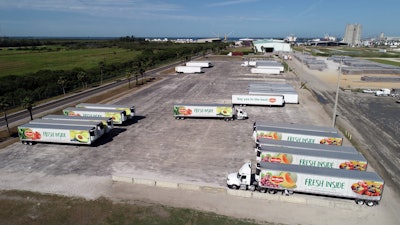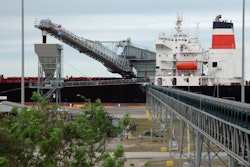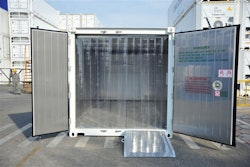
A new throughput-maximizing facility opened in early April at Port Manatee is helping speed shipments of fresh produce to consumers of Florida and beyond.
Port Manatee’s newly unveiled transfer facility, with room for 120 trailers, optimizes capabilities for expediting movement of cargo by freeing up near-dock yard space for stacking as many as 300 containers at a time.
“The trailer transfer facility could not be coming online at a more encouraging time,” said Carlos Buqueras, Port Manatee’s executive director. “The enhanced efficiencies this new installation facilitates already are proving vital in best utilizing port acreage to accelerate shipments of imported fruits and vegetables to consumers.”
The 3.6-acre facility was completed in three months at a port investment of $916,093 while supporting 10 construction jobs.
Shippers of produce through Port Manatee include Del Monte Fresh Produce Co., which imports bananas, pineapples and avocados from Central and South America, and Port Manatee-based World Direct Shipping, which brings in a wide array of time-sensitive perishables from Mexico.
Priscilla Whisenant Trace, chairwoman of the Manatee County Port Authority, said the trailer transfer facility is emblematic of the prudent investments being made to ensure fullest use of port tracts.
“Strategic investments in infrastructure, such as this newest facility, are essential to Port Manatee’s ability to best serve its users and, moreover, the consumers of our region and beyond,” she said. “This is particularly important amidst the COVID-19 pandemic, as we maintain essential operations while steadfastly focused on safety and health.”
Located “Where Tampa Bay Meets the Gulf of Mexico,” Port Manatee is the closest U.S. deepwater seaport to the expanded Panama Canal, with 10 40-foot-draft berths serving container, bulk, breakbulk, heavylift, project and general cargo customers. The self-sustaining port generates more than $2.3 billion in annual economic impact for the local community, while providing for more than 24,000 direct and indirect jobs, all without benefit of local property tax support.



















